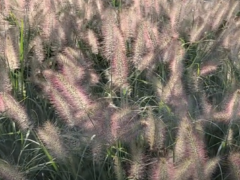
‘Ginger Love’ Fountain Grass
Pennisetum alopecuroides 'Ginger Love'
Big, showy, upright, red plumes appear in late summer and persist through winter on this … Continued
Grasses belong to one of the largest and most economically and ecologically important families of plants with over nine thousand species recognized by botanists. Grasses can be found on every continent and in a wide variety of habitats, both as the dominant plant type (in prairies and tundra) or as minor components of the plant community. Collectively, grasses domesticated as crops represent the world’s most important source of food.
Grasses have multiple characteristics that differentiate them from other plants. They usually have long, narrow leaves and can grow very tall (tropical bamboos can grow 328′ high) or prostrate along the ground. Grasses have evolved in environments where drought, grazing by large herbivores, and fires were common, and have large root systems that can store substantial food reserves that allow them to regrow quickly if aboveground parts are removed. This also makes them drought resistant, ideal for lawns that are repeatedly mowed, and great for preventing soil erosion.
Click for a chart to compare grasses by height.

Pennisetum alopecuroides 'Ginger Love'
Big, showy, upright, red plumes appear in late summer and persist through winter on this … Continued
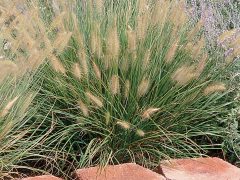
Pennisetum alopecuroides 'Hameln'
Dwarf fountain grass is cold hardy, heat and drought tolerant. Grows 2-3′ tall, and is … Continued
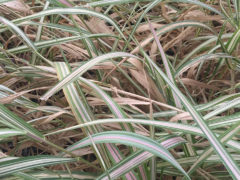
Phalaris arundinacea 'Strawberries and Cream'
18″ colorfully tricolored leaves are variegated with white, green and pink. This grass spreads aggressively, … Continued
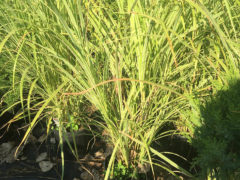
Saccharum ravennae (formerly Erianthus ravennae)
Showy plumes tower 8-10′ tall in summer. An excellent instant privacy planting especially useful between … Continued
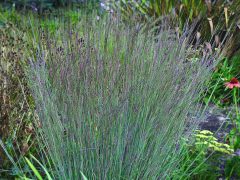
Schizachyrium scoparium
Perennial Plant Association 2022 Perennial Plant of the Year! State grass of Kansas Silvery-blue foliage … Continued
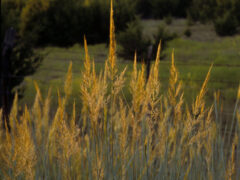
Sorghastrum nutans
Upright clumps of slender, blue-green leaves 1/2″ wide. Foliage turns orange-yellow in fall. Stems are … Continued
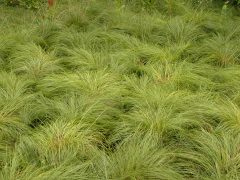
Sporobolus heterolepis
2′ narrow-leaved, fragrant native grass. Incredibly attractive in bloom and seed.
Carex albicans
Sometimes called oak sedge, this clumping sedge grows to 15-20″ tall. It is native to … Continued